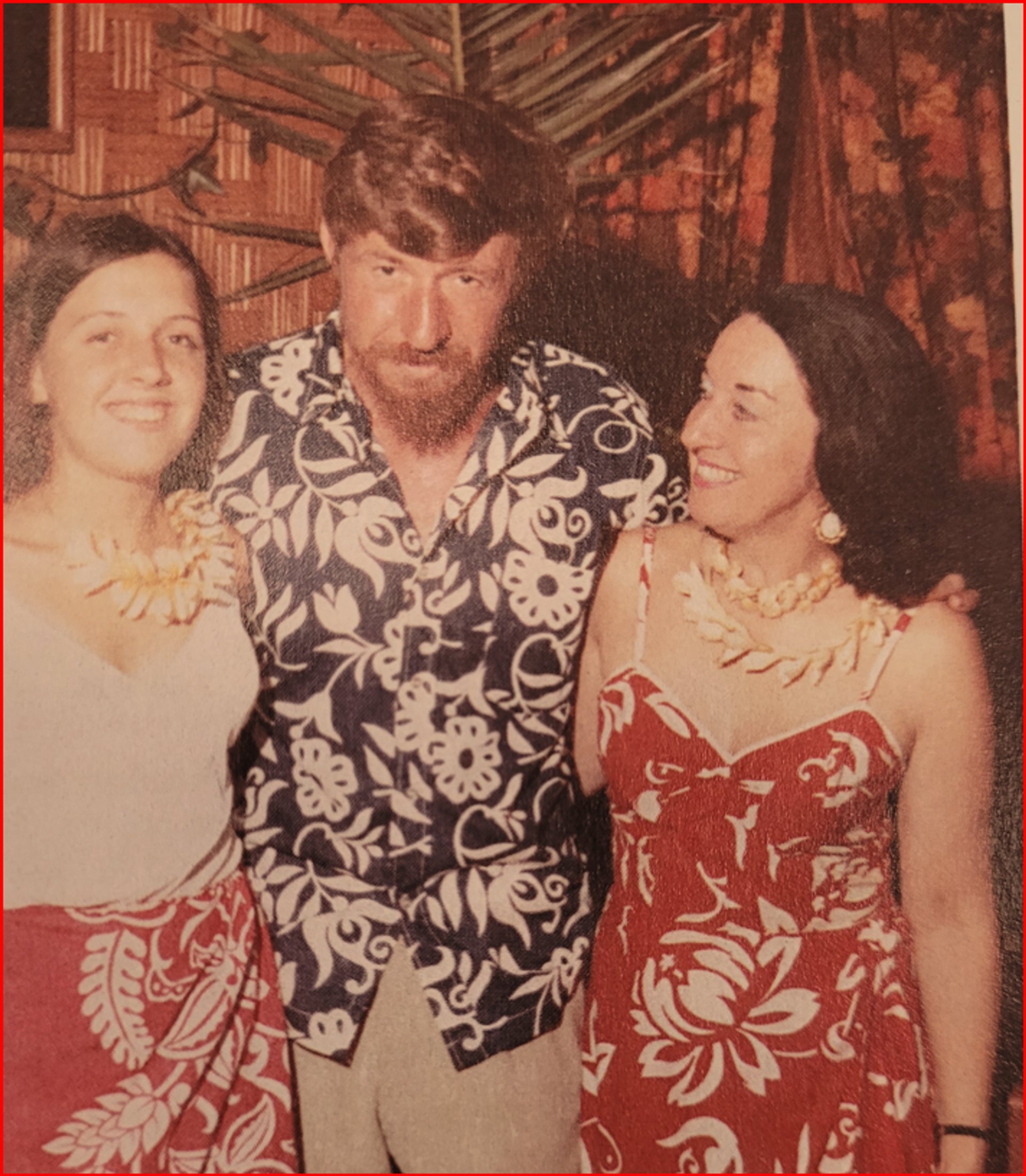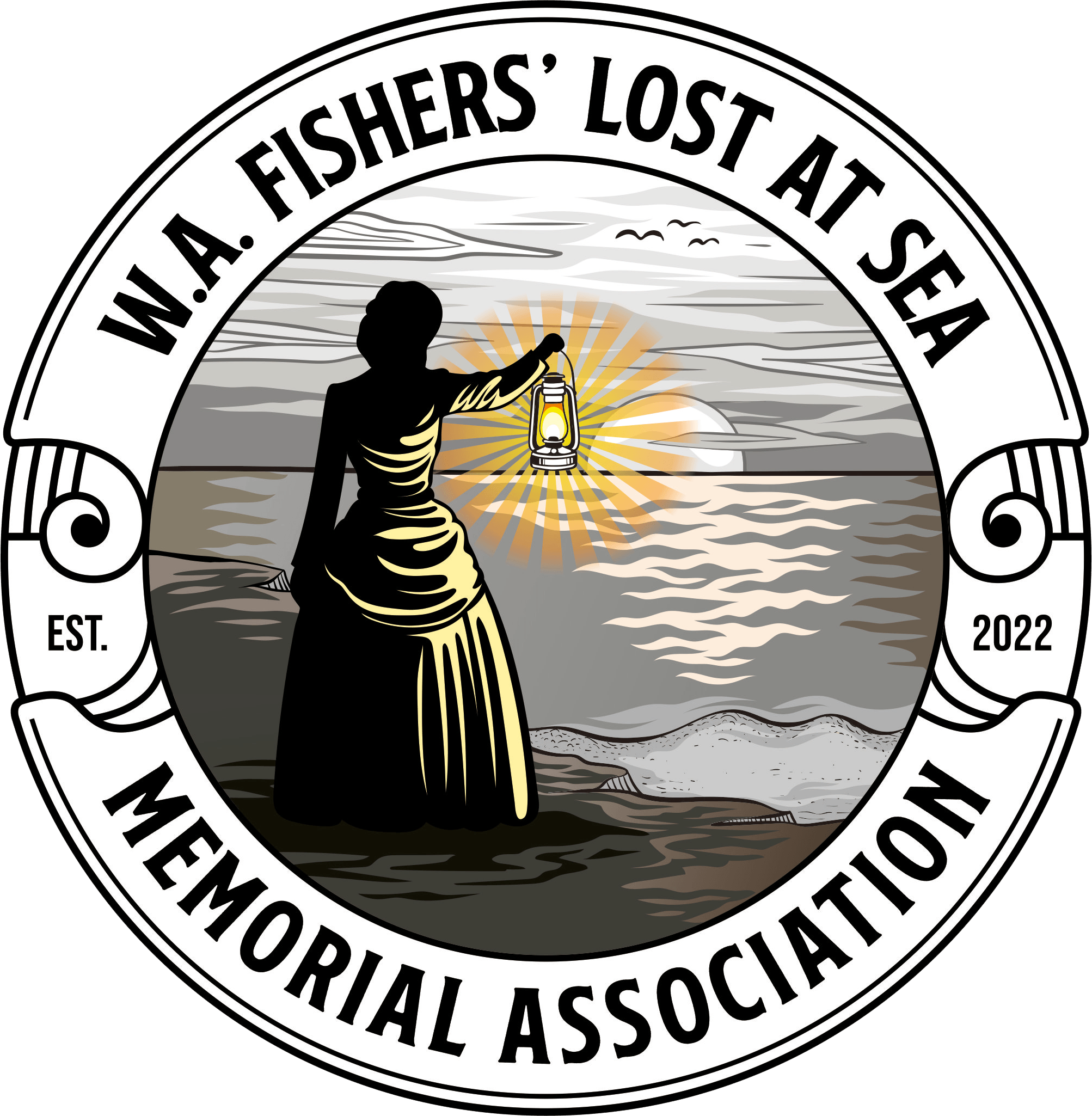San Michelle
Vessel Name: San Michelle
Strahinja "Stan" Stojanovic
Margaret MacLean
Tania MacLean
Ann Wischusen
Disappeared; no bodies recovered
11 January 1971

San Michelle

Stan, Margaret and Tania at El Calib
Strahinja “Stan” Stojanovic was born in Zagreb, Yugoslavia on 23 April 1927 to a Serbian Orthodox family. After attending school in Belgrade, he completed the compulsory period of military service and was drafted into service under General Mihailovic until 1943 when he escaped the communist advance and joined the Yugoslav Navy. He served as a radio operator in the Malta and the Middle East areas. Despite being in the navy, Stan remained a poor swimmer.
Stan eventually boarded the Wooster Victory, arriving in Fremantle in November 1948 with John Dabovic. They seem to have remained business partners over the years that followed.
In the 1950s Stan and John invested in a plantation in East Carnarvon. Stan took to fishing while John remained on the plantation. They shared ownership of the wetliner Seagull.
The Seagull was a 33 foot [10.06 metres] fishing boat with an auxiliary motor. She was reported overdue on 17 February when she did not return, and the major search and rescue that followed captured Western Australia’s attention, appearing in page 1 of newspapers all over the state.
On 2 February 1953 Stan and Robert Baker left Carnarvon for the Shark Bay fishing grounds. They carried fresh water, ice and supplies for 11 days. A storm robbed Seagull of her sails and anchor shortly after she left Carnarvon, and the auxiliary motor could not handle the heavy seas that followed, leaving her adrift.
On 17 February, with only a little food and two gallons of water left, Robert jumped overboard and battled the one and a half miles over reef and rocks [2.41 kms] to shore. Once reaching the beach, he walked 17 miles [27.36 kms] to Quobba Station to get help. Finally, on 21 February, Stan was rescued via air dropped life vests, and he made the shore where he was rescued. Seagull continued on alone and was not seen again. She was not insured. Stan wrote to the local newspaper thanking each and every person by name who was involved in his rescue.
This episode did not change Stan’s love of the sea. He continued to fish around Carnarvon and Shark Bay. Later he moved to Perth and then fished from Fremantle to Carnarvon. His next boat was the Theo Christie.
Theo Christie was a 48.4 foot [14.7 metres] ketch built in Darwin in 1932 by Andrea Manolias, a Fremantle fisherman. She was first owned by a consortium of fishermen and their wives. She was a part of the wetlining fleet that sailed from Fremantle to Shark Bay each year. She was initially named the Theuchariste F74 [a spelling error of The Euchariste when the name was painted onto the boat]. Her official number was 140170.She measured 18.15 feet [5.53 metres [across her beam and drew 6.2 feet [1.89 metres] of water. She had a wheelhouse at the stern and two masts with lug rigging. Theo Christie F74 was a hearty boat that had survived a cyclone in 1937 at Shark Bay and several severe storms.
Stan’s lifestyle changed in the 1950s. He was six feet tall [183 cms] and weighed 12 ½ stone [79 kgs]. He had blonde hair. He kept his “urbane and intriguing character”, and due to his past remained “somewhat mysterious”. It was never really clear how much money Stan had, or whether he owned the assets he claimed or had part-ownership of.
In 1950 he was naturalised as an Australian citizen. He started a relationship with Margaret MacLean who owned the El Calib Coffee Shop and Restaurant, a Tahitian themed licenced café and restaurant and Capri Casuals, a high fashion store in Perth’s central district. She also had a variety of financial investments. Originally from Scotland, Margaret had been married twice. She had a daughter in Honolulu in 1954 with her second husband who died in 1962, leaving his estate to Margaret. Tania was a student at the exclusive St Hilda’s Girls School.
Stan’s life revolved around fishing, Margaret and the El Calib. He moved to Mosman and his social life escalated. The couple were photographed in newspapers often. Their de facto relationship and Bohemian lifestyle were considered slightly scandalous for Perth in the 1950s which only served to make El Calib more popular.
Despite his early brush with death, Stan also kept his “cavalier attitude to the sea”, which was something that other fishermen were critical of. Stan was still considered a competent fisherman with a great deal of experience.
In 1959 while skippering the crayfishing boat Marigo, Stan was charged with stealing cray pots, floats and ropes at Shark Bay. It seems that the incident saw an end to Stan’s fishing in the Shark Bay area.
Stan did not pay wages or bills promptly. The last recorded service on Theo Christie was 8 January 1951 when she worked in the Shark Bay area. She last passed survey on 1 April 1955. Then she lay on the beach, neglected until Stan had towed her to Fremantle for re-fitting.
Stan’s next venture started in 1962. He was granted the sole right to catch green backed turtles for 70 miles [112.65 kms] north of the Northwest Cape, paying £50 per year for his licence. He worked from June to September or October and returned to Fremantle and life at the El Calib for the rest of the year.
During turtle season, he lived aboard with a crew of eight deckhands. They remained at sea with a state ship meeting them to load their catch. They exported turtle shells and meat. Accompanying San Michelle was Dalmatia, a freezer boat with three butchers aboard who prepared the turtle meat for canning. Over the next nine years, Stan maintained his exclusive licence and made a good living. He and Margaret bought a large house in Mosman in 1970.
Stan took Margaret and Tania on trips aboard San Michelle, and they were used to travel at sea for sightseeing and diving holidays. At the end of the 1970 season, Stan made repairs and cleaned up the San Michelle in preparation for a trip with them in 1971. He wanted to dive on a wreck he had found in South Passage to remove the lead in the keel. For this purpose, he removed weight on the San Michelle in the refit and added suction pumps in the hold to remove the sand around the wreck’s keel. San Michelle carried explosives on the voyage.
On 27 February 1972 Stan, Margaret and Tania left Fremantle. Also aboard was a school friend of Tania’s, Ann Wischusen. Margaret left her manager of the El Calib, Mr Rejek as her power of attorney to keep her business running. Tania was enrolled in her next year at St Hildas. Ann was due to disembark at Carnarvon and return to Melbourne ready for her school year.
Arthur Grimbly was a boat mechanic who had worked on San Michelle many times. He thought the ageing hull was in poor condition and the boat was hard to handle under full sail. Warren Mews agreed the hull was in poor condition after repairs were made, and with the wheelhouse removed, the boat needed more ballast.
San Michelle had three days of fresh food, 100 gallons of water and tinned food aboard when she left Fremantle. Her first port of call was Geraldton for fuel and repairs to the refrigeration. Stan told everyone he spoke to that they were heading to the Monte Bello Islands stopping at Carnarvon and Onslow.
On 09 January the little crew left Geraldton. San Michelle left under diesel motor power out to the lead lights, and then locals saw her sails unfurl and she sailed away. Her next stop was Carnarvon, about 48 hours after leaving Geraldton. The first night out of Geraldton was rough and San Michelle did not arrive in Carnarvon.
At the time Ann’s father reported the San Michelle as overdue, on 27 January 1971 an Aztec Piper light aircraft was reported missing in the same area. An intense air search began, and pilots were instructed to search for San Michelle as well. Messages were sent out five times per day over shipping channels and small craft radio channels asking for boats to watch for her. Neither the plane nor the boat was sighted.
Cyclone Rita brought heavy seas and strong winds. Stan had been through cyclones before, and he said he headed for tidal creeks and lay in shelter when bad weather came. WA Petroleum conducted three air searches of the Monte Bello Island and all of the tidal creeks south as far as Geraldton. They had no sightings. They found a dinghy belonging to Barrow Island and the wreck of the Three Sisters.
Ann’s father chartered a light plane and searched the coast from Perth to Geraldton and around the Abrolhos Islands following a report of a sighting near Beacon Island. He found no trace of San Michelle and seeing the extent of the search being made, he returned to Melbourne.
On 29 January a fisher at Jurien Bay reported seeing the San Michelle on 22 January heading South under power and sail. He said the boat was known to him and he recognised her. It was not the direction Stan said he was going. Was he misdirecting people to keep his destination secret? Or was the fisher mistaken? Did San Michelle look the way the fisher remembered after her refit?
The tanker Solen radioed a report of wreckage of a small boat 19 miles off Cape Naturaliste. An RAAF Dakota searched the area, and wreckage was spotted from the air. The next day the wreckage could no longer be seen. The wreckage was in a shipping lane. Was it possible Stan left San Michelle on auto pilot overnight and was struck by a large vessel?
The search continued in various forms into March. Gradually as leads petered out and no wreckage was found, it was accepted that the San Michelle had disappeared. In August of 1973 the Danish ship Herule brought a mast to Fremantle. She had picked up the mast 450 miles [724.2 kms] from Durban in November 1972.The mast was shown to builders and surveyors. There was no conclusion about whether it belonged to San Michelle.
To date the San Michelle remains missing, presumed wrecked. Strahinja Stojanovic, Margaret MacLean, Tania MacLean and Ann Wischusen are presumed dead. Stan’s next of kin was his mother. The executor of Margaret’s will, Dr Louis Gelle, retired and handed her estate to the Public Trustee. Eventually her brother in New Zealand inherited her wealth. Ann’s father funded the perpetual Ann Wischusen Prize at St Hilda’s Girls School in Ann’s memory. The green turtle industry off WA coast was closed in 1973.
